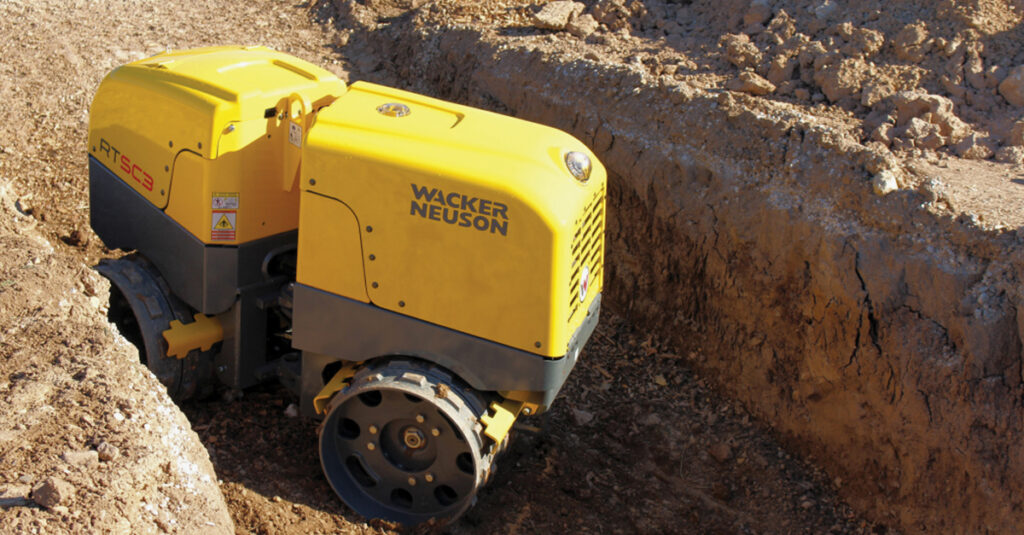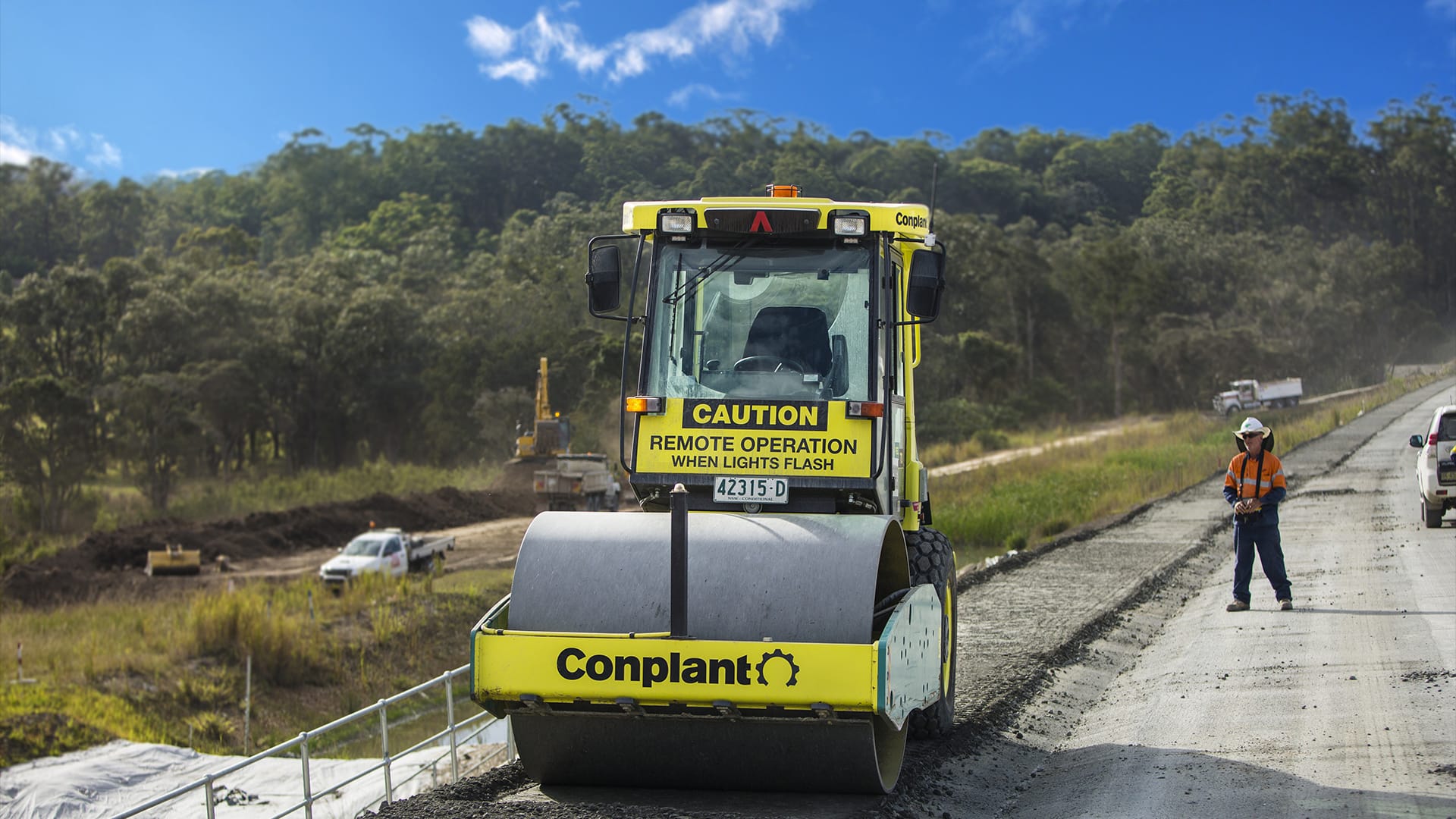How to choose the right compaction roller
If a job’s worth doing, it’s worth doing right, right? And every building project starts with a solid foundation. That’s why effective soil compaction is so crucial. Compaction helps to provide a flat, level surface with maximum density and load-bearing capacity on which to build.
But when it comes to compaction, it’s not as simple as just choosing the ‘best’ roller. There’s no one-size-fits-all solution for every site. Each job is unique and requires the right equipment to deliver the best result. Regardless of whatever the end product of the project is, the goal of compaction is to compact a surface in the fewest number of passes possible, in order to save on time and fuel costs. Choosing the right compaction roller to achieve this means assessing several factors.
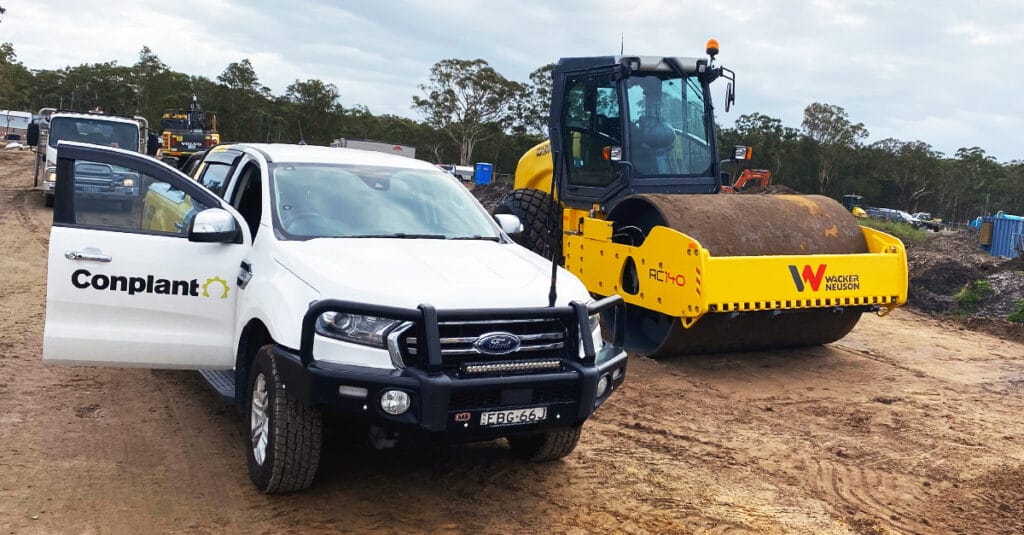
What factors affect soil compaction?
Whether it’s a small backyard landscaping project, a stretch of highway, or an industrial-scale high-rise complex, the scope of compaction projects is a very broad spectrum. On any given site, potential variables include:
- Soil type: While it might seem obvious, the nature of the soil you’re working with has a strong bearing on what equipment to use. For example, padfoot rollers are best suited for more cohesive soils like clay, whereas smooth drum rollers are better for looser, granular bases like sand and gravel & mixed soils. The volume and depth of soil also dictates what equipment you should use. Note: Vibrating machinery may be needed to compact sandier soil because of its high permeability. Whereas high pressure compaction may be required to break up clumps and achieve greater density in a soil with low permeability, like clay.
- Moisture level: When it comes to soil moisture, it’s a fine balance. Optimum moisture content for soil compaction is generally between 12-25% for fine-grained soils and 7–12% for granular soils. When soil becomes saturated with water, the soil liquifies and can become too dense. When soil is too dry, it isn’t able to bind together effectively. Think about the beach as an example – the hot, dry sand is too shifty, while wet sand at the water’s edge is too muddy. But somewhere in between, there’s a sweet spot for building sandcastles. Although suffice to say, managing soil moisture onsite is a little more sophisticated.
- Project specs: This includes the size and nature of the job, project timelines, and necessary level of compaction. For example, are you compacting just in order to lay down some garden pavers or are you laying the foundations of a multi-storey building? Does the job have a deadline of two weeks or two years? Does the site have a combination of different base materials and will the finished product have multiple functions (e.g. building framework and roads). Addressing these kinds of questions will help determine what kind of roller – or how many – you’ll need.
- Site conditions: Take into account the space, including slope gradient and potential obstacles, such as trees, pipework, underground services or surrounding structures. Consider access points as well as the site itself – for instance, soft tyres may be required to avoid cracking concrete gutters in the vicinity.
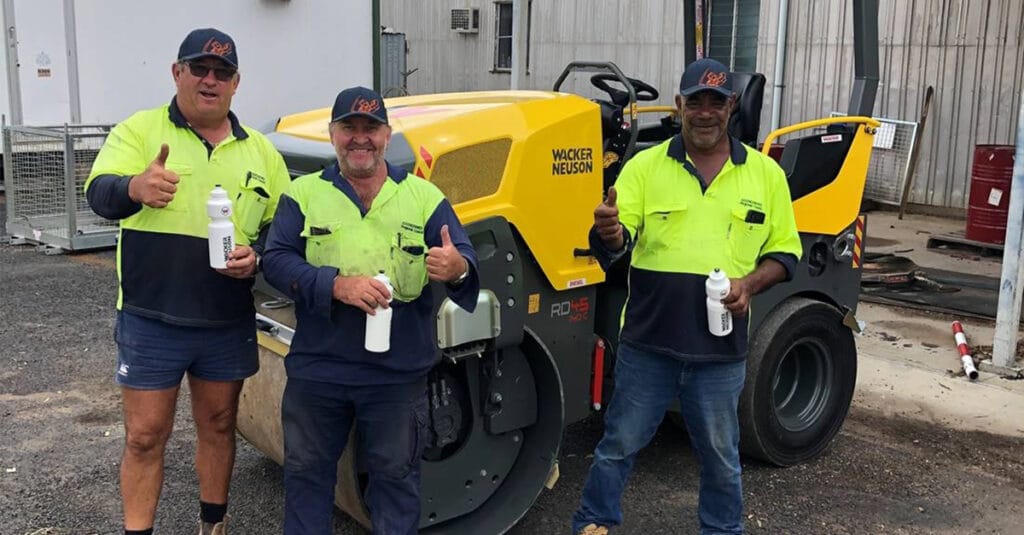
What types of compaction rollers are there?
Smooth drum rollers (6t-27t) are designed to compact granular soils like sand, gravel, and crushed stone. They’re composed of a vibrating smooth, cylindrical steel drum & rubber Tyres at the rear. The smooth drum roller provides pressure to the soil, compacting it and producing an even and uniform surface. Often used for general civil works, car parks, hardstands, road construction and driveways.
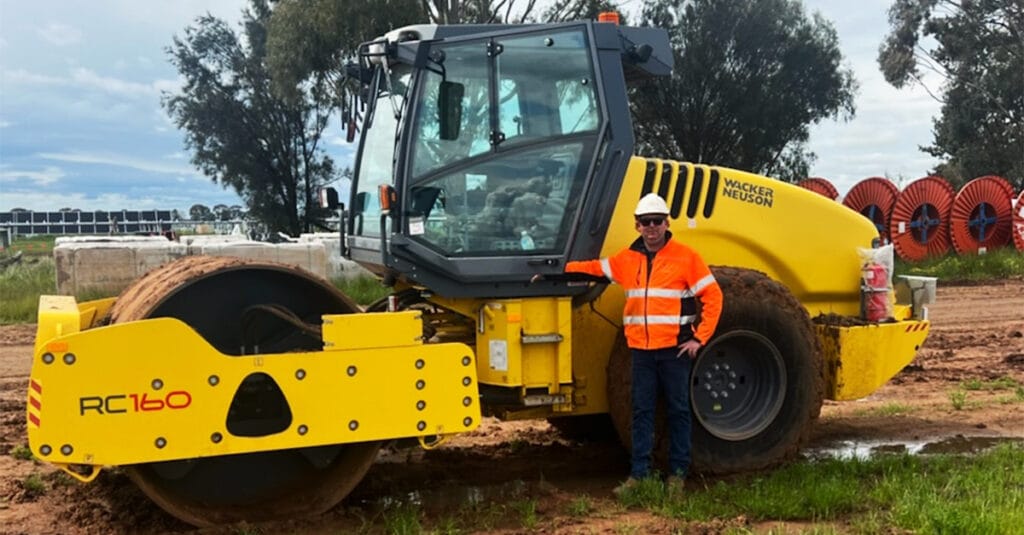
Padfoot rollers (3t-28t) are versatile, typically used to compact cohesive soils like clay and silt. They feature a heavy vibrating steel drum with rectangular or cylindrical pads that pierce and compress the soil, resulting in a compacted surface. Padfoot rollers are widely used in general civil works, car parks, hardstands, road construction, building pads, and other earthwork operations. They are well suited to compacting moist cohesive soils and are often used in conjunction with other types of rollers to reach optimal soil compaction levels.
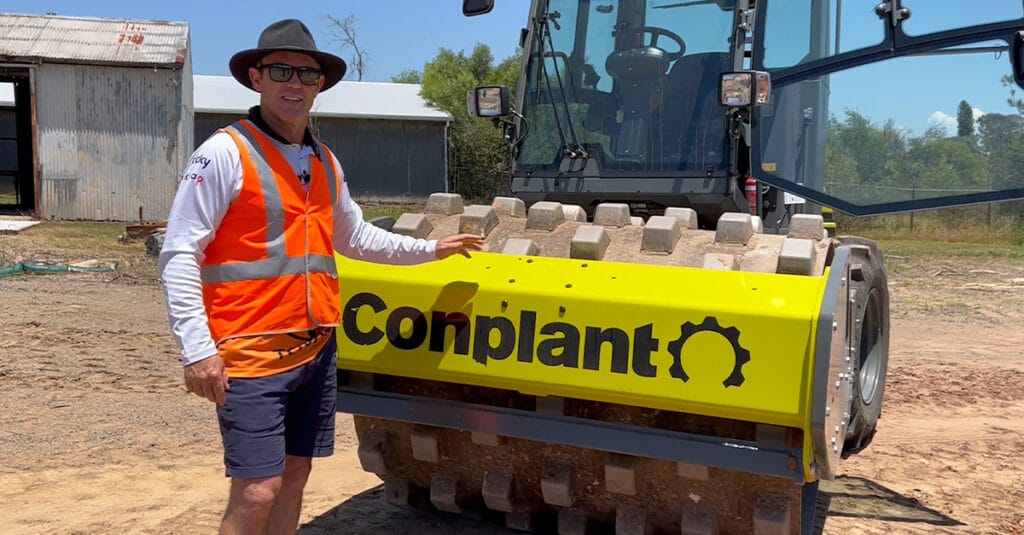
Multi-tyred rollers (1.5t-40t) of all sizes are ideal for all Asphalt applications providing a “Kneading effect” compaction to the surface. They are heavily used in road construction and road maintenance and can also be used for proof rolling. We can also provide vibrating multi-tyred rollers with a pressurised water sprinkler system and mats to help keep the tyres damp and also clean the tyres.

Trench rollers – as the name suggests – are generally used in a trench compaction environment. Articulated steering keeps all four drums on the ground, meaning it won’t dig up your soil when turning. Infrared remote control allows the operator to stand safely outside the trench, protected from vibration, dust and noise.
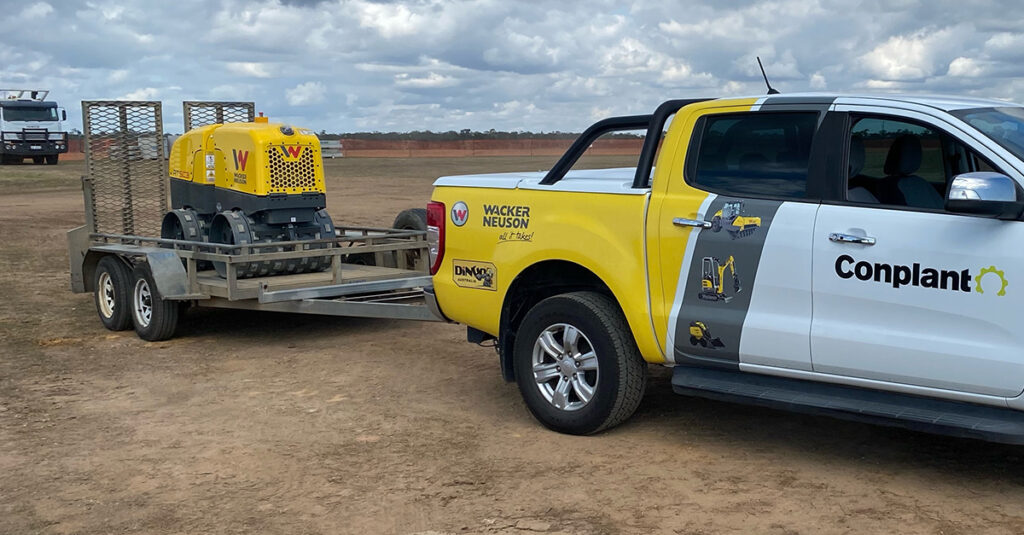
Tandem rollers (1.5t-14t) are commonly used for in most general civil works, compacting fine-grained soils and asphalt. They’re often used to compact the base and surface layers in road construction projects, including driveways and carparks. Tandem rollers consist of two smooth vibrating steel drums, with the weight typically distributed evenly between both drums – like the kind you might see used to prepare a cricket pitch.
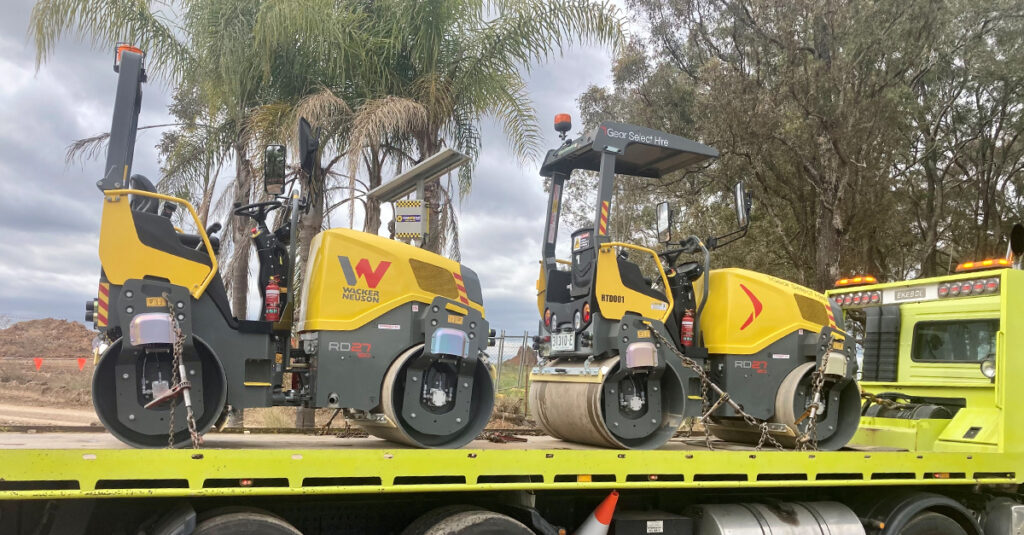
Combination rollers (2t-11t) combine the benefits of both a smooth drum and pneumatic-tyred roller. A vibrating front drum enables a smooth finish and great compaction, while rubber wheels help finish off the compacted surface via a kneading effect to seal off the works and may also reduce the risk of cracking concrete in An in-built sprinkler system adds moisture to reduce material sticking to the drum and tyres and most are fitted with an additional Sprinkler additive tank for the rear tyres.
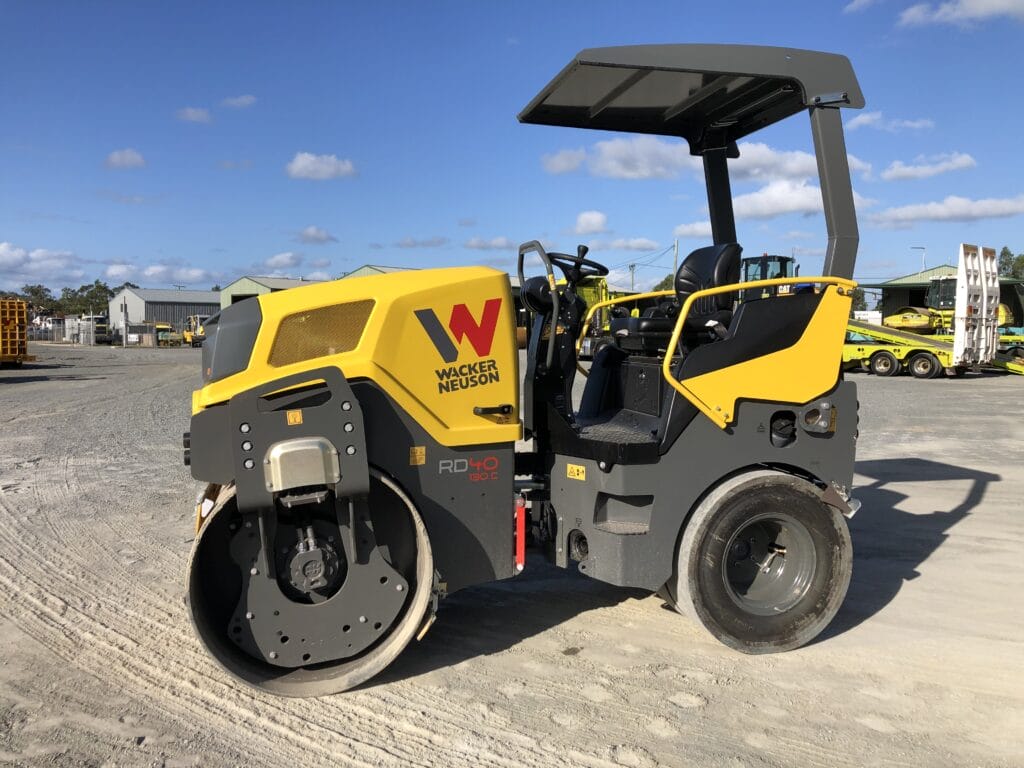
Static three-point rollers (12t-15t) are non vibratory and predominantly used for proof rolling and thin granular/semi-cohesive soil with low moisture content and low plasticity. It’s ideal for medium to large applications in areas where you need to minimise vibrations, such as, Hospitals & sensitive residential areas, near buildings, or on bridges.
Want to see what’s available? We carry Australia’s most comprehensive roller hire range.
What size compactor do I need?
As well as different styles of compactor, you also need to match the size of roller to your application. Naturally, smaller rollers are better suited to smaller sites with smaller lift thickness with limited access, or jobs requiring finer details. However, if a roller is too small, it may not exert enough force to compact the soil densely or deeply enough.
Larger rollers are favoured on big sites with larger lift thickness’ where more ground needs to be covered and access isn’t an issue. Naturally, heavier rollers are also able to compact larger areas more quickly, covering more surface area in fewer passes.
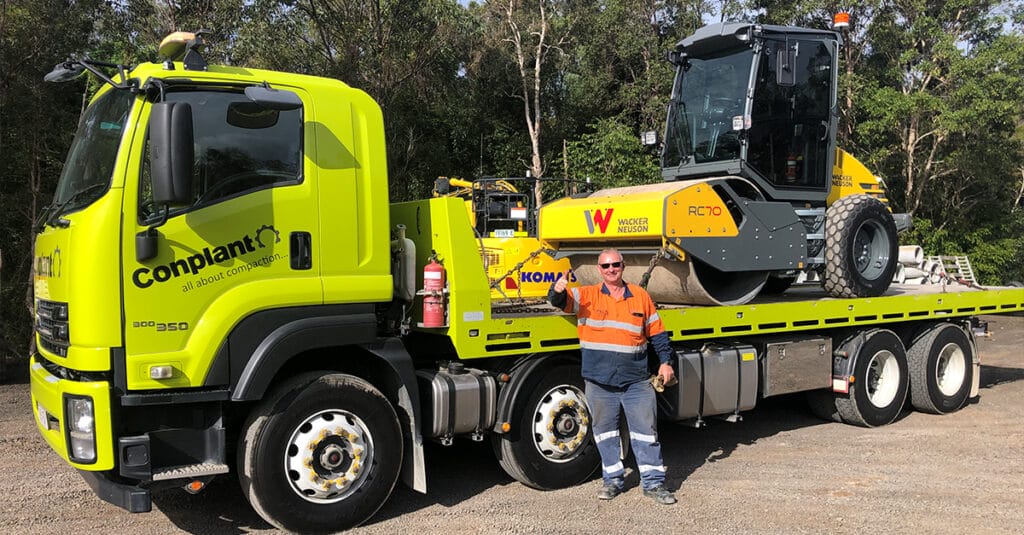
What happens if I use the wrong roller?
To fully illustrate the importance of choosing the right compaction roller, it’s worth mentioning what can go wrong when using an ill-suited roller.
When under-compaction occurs, too much space or air is left in the soil base. As soil particles continue to move and settle into the spaces left by the lack of compaction, under-compacted soil may eventually shift and settle during or even after construction. This may result in damage to pipes and other underground structures, as well as cracks in building walls and floors – leaving structures unsafe or even unusable.
On the other hand, over-compaction will cause de compaction of your material by turning it into a powder like state that will also result in unstable finish leading to premature job failure & erosion.
Other potential consequences of using the wrong roller include:
- Cracked pavement structures
- Damage to concrete steps in landscaping
- Damage to pipework & underground services
- Unlevel settlement and cracking in concrete paths and driveways
- Rainwater running in the wrong direction after heavy downpours
Need a hand getting your next project on the road? Give us a call on 1300 166 166 or get an online quote now.
